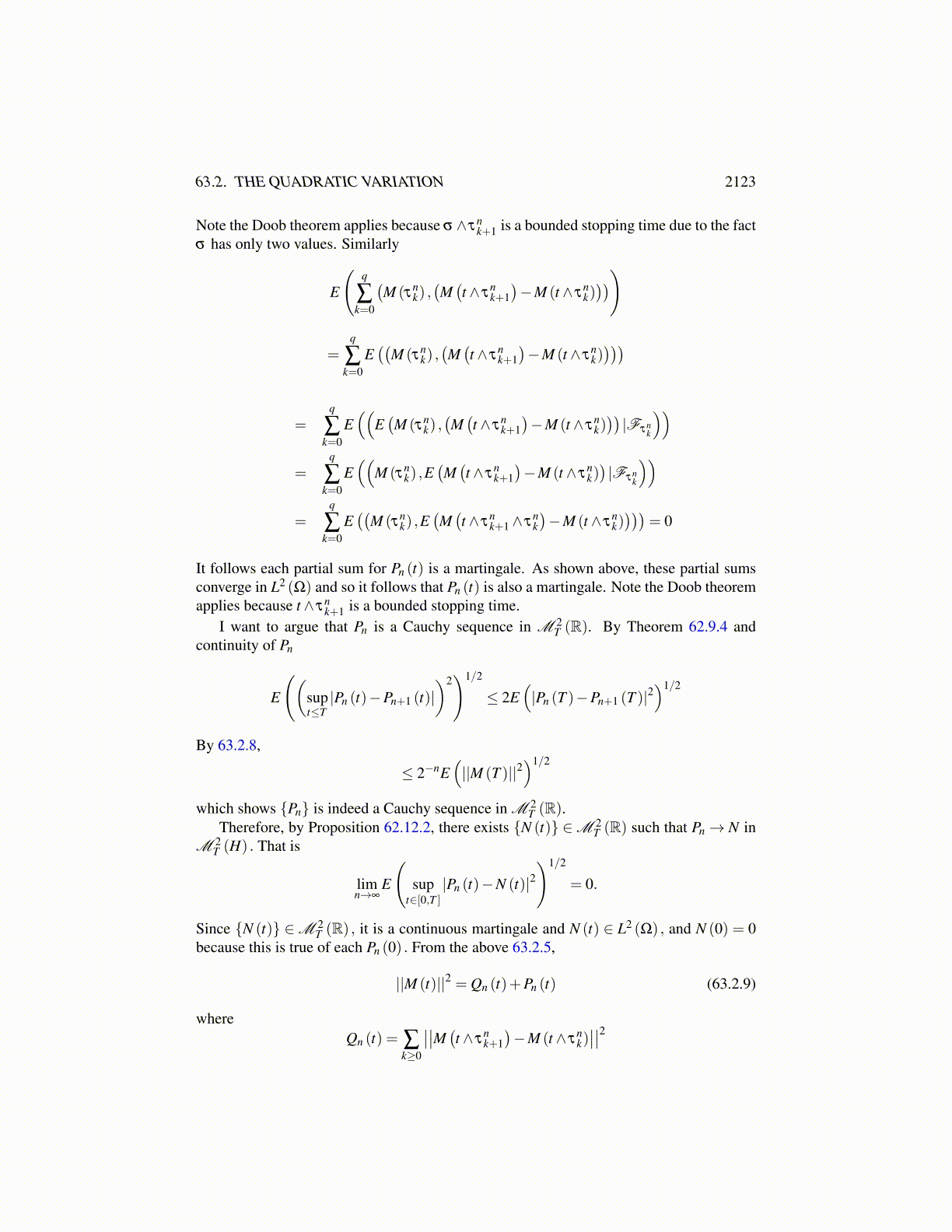
63.2. THE QUADRATIC VARIATION 2123
This last sum equals Pn (t) defined as
2 ∑k≥0
(M (τn
k) ,(M(t ∧ τ
nk+1)−M (t ∧ τ
nk)))≡ Pn (t) (63.2.6)
This is because in the kth term, if t ≥ τnk , then it reduces to(
M (τnk) ,(M(t ∧ τ
nk+1)−M (t ∧ τ
nk)))
while if t < τnk , then the term reduces to 0 which is also the same as(
M (τnk) ,(M(t ∧ τ
nk+1)−M (t ∧ τ
nk)))
.
This is a finite sum because eventually, for large enough k, τnk = T . However the number
of nonzero terms depends on ω . This is not a good thing. However, a little more can besaid. In fact the sum also converges in L2 (Ω). Say ||M (t,ω)|| ≤C.
E
( q
∑k≥p
(M (τn
k) ,(M(t ∧ τ
nk+1)−M (t ∧ τ
nk))))2
=q
∑k≥p
E((
M (τnk) ,(M(t ∧ τ
nk+1)−M (t ∧ τ
nk)))2)+ mixed terms (63.2.7)
Consider one of these mixed terms for j < k.
E
M
(τ
nj),
∆ j︷ ︸︸ ︷
M(t ∧ τ
nj+1)−M
(t ∧ τ
nj) ·
M (τnk) ,
∆k︷ ︸︸ ︷
M(t ∧ τ
nk+1)−M (t ∧ τ
nk)
Then it equals
E(E((
M(τ
nj),∆ j)(
M(τ
nj),∆k)|Fτk
))= E
((M(τ
nj),∆ j)
E((
M(τ
nj),∆k)|Fτk
))= E
((M(τ
nj),∆ j)(
M(τ
nj),E(∆k|Fτk
)))= 0
Now since the mixed terms equal 0, it follows from 63.2.7, that expression is dominated by
C2q
∑k≥p
E(∣∣∣∣M (t ∧ τ
nk+1)−M (t ∧ τ
nk)∣∣∣∣2)